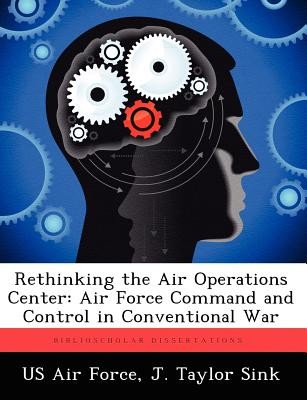
- We will send in 10–14 business days.
- Author: J Taylor Sink
- Publisher: BiblioScholar
- ISBN-10: 124932842X
- ISBN-13: 9781249328421
- Format: 18.9 x 24.6 x 0.4 cm, softcover
- Language: English
- SAVE -10% with code: EXTRA
Reviews
Description
he Air Operations Center (AOC) is the centerpiece of the Air Force's new command and control (C2) system for prosecuting theater conventional war. The AOC is a direct outgrowth of the Tactical Air Control Center (TACC). In Vietnam, the TACC mirrored the divided command structure of the U. S. military establishment in Southeast Asia. This resulted in a C2 system that allowed air power to be responsive to the needs of traditional land campaigns, and yet require extensive planning time for deep interdiction and strategic attacks. Additionally, since a land strategy dictated targeting priorities in South Vietnam, the Air Force's measure of effectiveness in the South was its ability to strike targets requested by ground commanders efficiently. Similarly, agencies other than the Air Force selected and approved deep interdiction and strategic targets during Rolling Thunder. Thus, the Air Force's measure of effectiveness in the North likewise became its efficiency of attacking targets there. Assessment thereby became disconnected from the political and military objectives.
Following the Vietnam War, the Air Force did not conduct a reassessment of the fundamental purposes or theoretical foundations of tactical command and control. Thus, although technology had improved the efficiency of the TACC, the Air Force entered Desert Storm with a C2 system that doctrinally was little changed from Vietnam. There are two implications. First, the air commander cannot execute responsive strategic conventional air war without disrupting the mission planning process, or without sacrificing his attack plan. In addition, since the value of targets may change drastically over time, the system cannot provide the air commander with an objective means of determining the relative importance of pre-planned and "opportunity" targets. Second, assessment remains disconnected from political and military objectives. Despite efforts to improve Battle Damage Assessment, the Air Force's primary measures
EXTRA 10 % discount with code: EXTRA
The promotion ends in 17d.18:25:02
The discount code is valid when purchasing from 10 €. Discounts do not stack.
- Author: J Taylor Sink
- Publisher: BiblioScholar
- ISBN-10: 124932842X
- ISBN-13: 9781249328421
- Format: 18.9 x 24.6 x 0.4 cm, softcover
- Language: English English
he Air Operations Center (AOC) is the centerpiece of the Air Force's new command and control (C2) system for prosecuting theater conventional war. The AOC is a direct outgrowth of the Tactical Air Control Center (TACC). In Vietnam, the TACC mirrored the divided command structure of the U. S. military establishment in Southeast Asia. This resulted in a C2 system that allowed air power to be responsive to the needs of traditional land campaigns, and yet require extensive planning time for deep interdiction and strategic attacks. Additionally, since a land strategy dictated targeting priorities in South Vietnam, the Air Force's measure of effectiveness in the South was its ability to strike targets requested by ground commanders efficiently. Similarly, agencies other than the Air Force selected and approved deep interdiction and strategic targets during Rolling Thunder. Thus, the Air Force's measure of effectiveness in the North likewise became its efficiency of attacking targets there. Assessment thereby became disconnected from the political and military objectives.
Following the Vietnam War, the Air Force did not conduct a reassessment of the fundamental purposes or theoretical foundations of tactical command and control. Thus, although technology had improved the efficiency of the TACC, the Air Force entered Desert Storm with a C2 system that doctrinally was little changed from Vietnam. There are two implications. First, the air commander cannot execute responsive strategic conventional air war without disrupting the mission planning process, or without sacrificing his attack plan. In addition, since the value of targets may change drastically over time, the system cannot provide the air commander with an objective means of determining the relative importance of pre-planned and "opportunity" targets. Second, assessment remains disconnected from political and military objectives. Despite efforts to improve Battle Damage Assessment, the Air Force's primary measures


Reviews